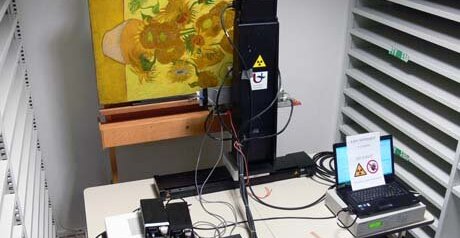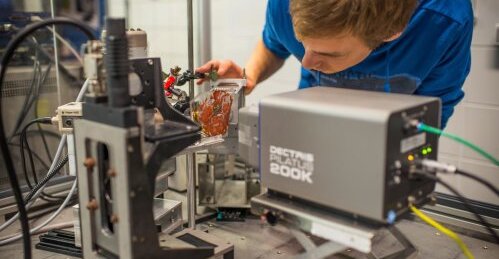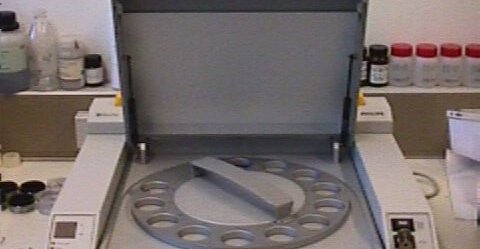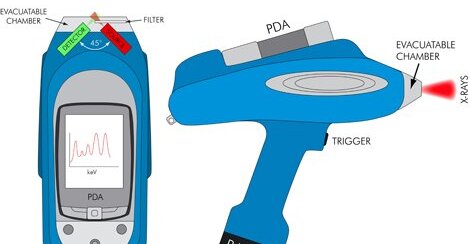With X-ray analysis it is possible to obtain chemical information of an unknown sample. During analysis the sample is irradiated with an highly energetic ( up to 100 keV) electromagnetic or X-ray beam. The interaction of the X-rays with the sample will lead to scattering of the primary beam as well as emission of new X-rays. Both phenomena reveal specific information regarding the composition of the sample.
- X-ray fluoresence or XRF: The primary X-ray beam will cause excitation and eventual relaxation of the present material by the emission of X-ray photons. These photons are element-specific and give us information regarding the elemental composition of the sample.
- X-ray powder diffratction or XRPD: In addition to excitation by the primary beam, the irradiated material will also scatter the primary beam. The recorded scatter pattern reveals the present crystalline phases and therefor gives information on the sample speciation.
Both techniques are non-invasive, non-destructive and can be performed in situ..They complement each other. All are available in the AXIS research group.



